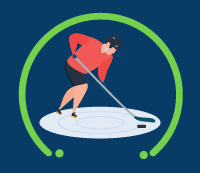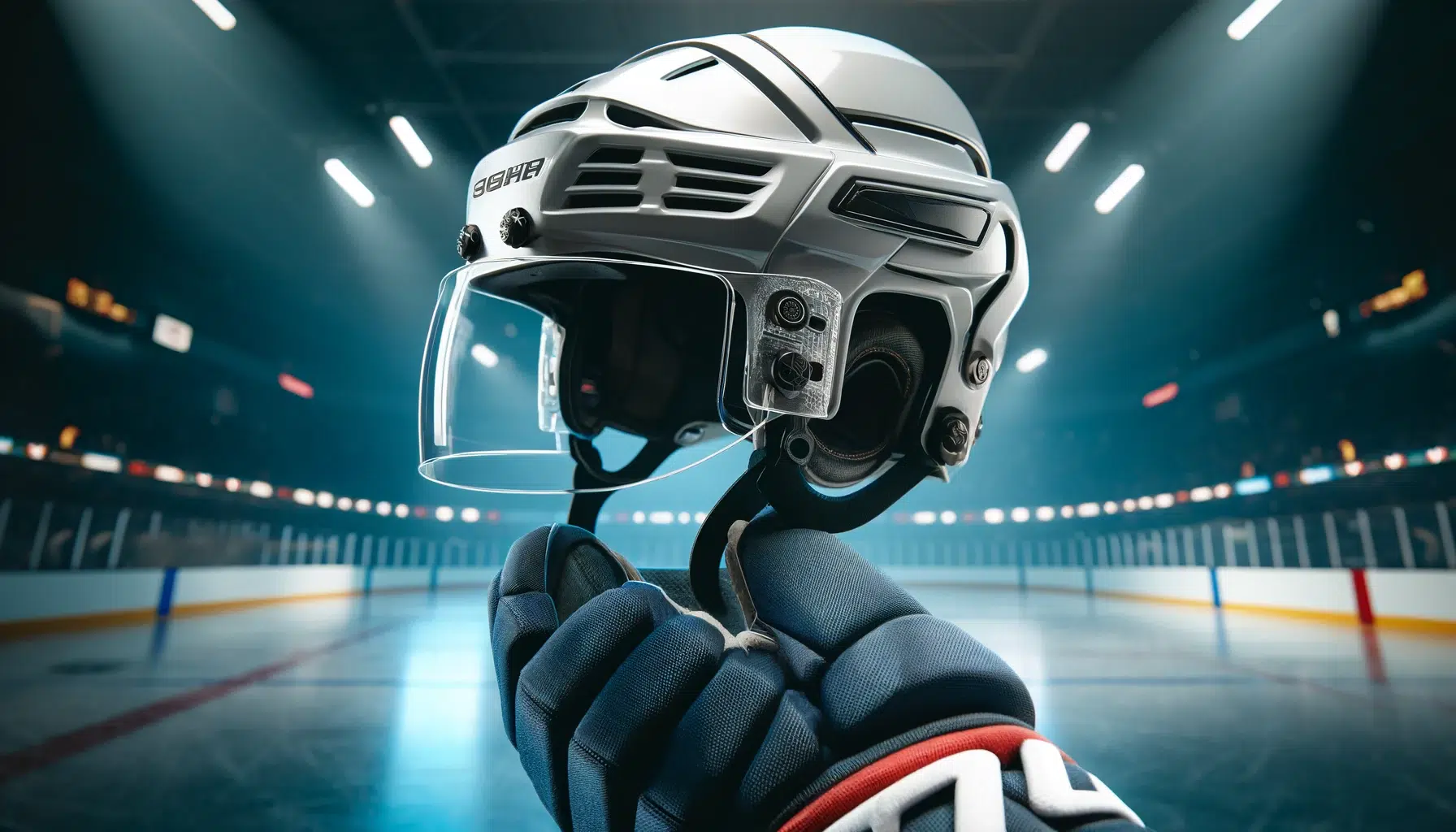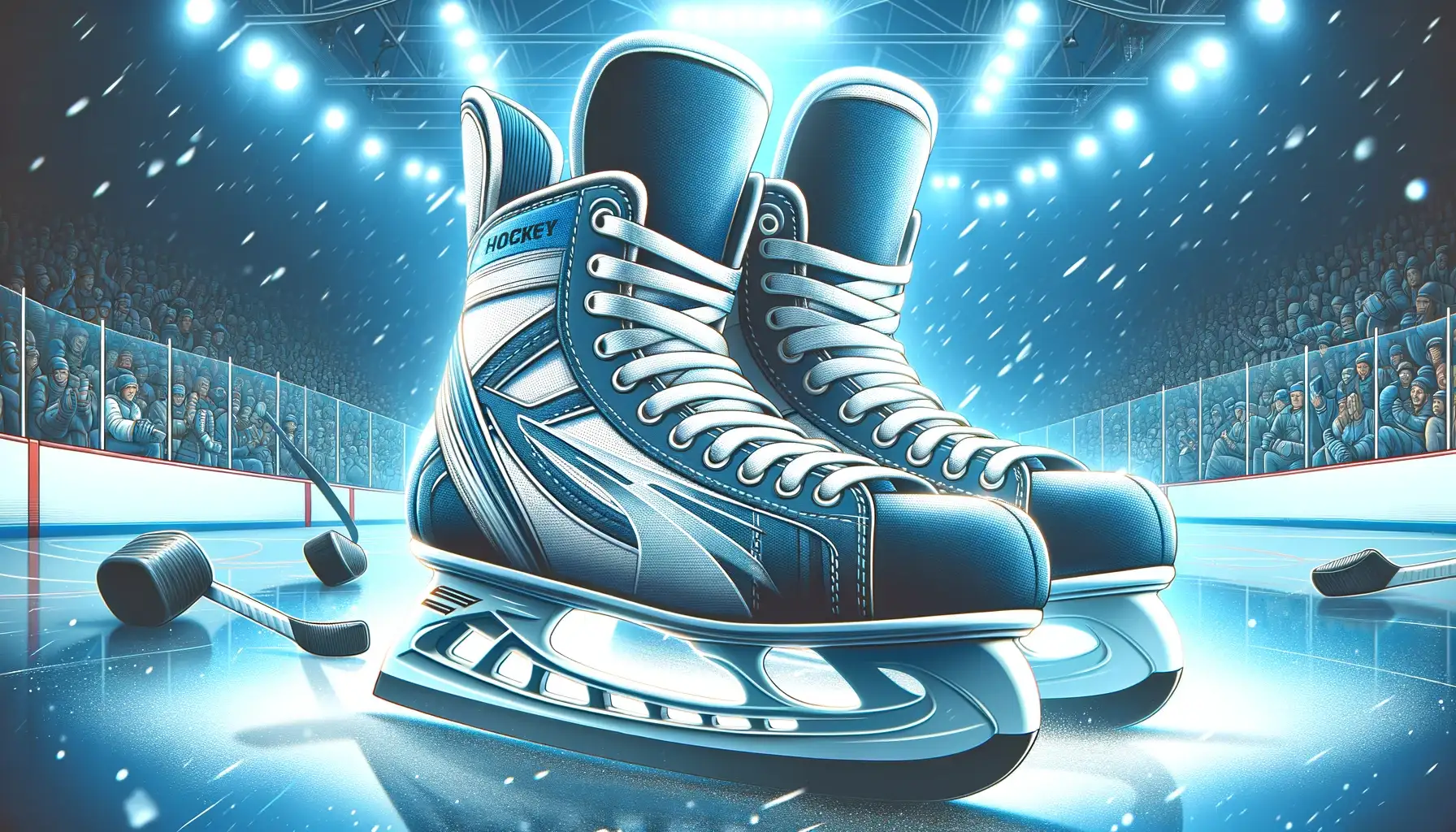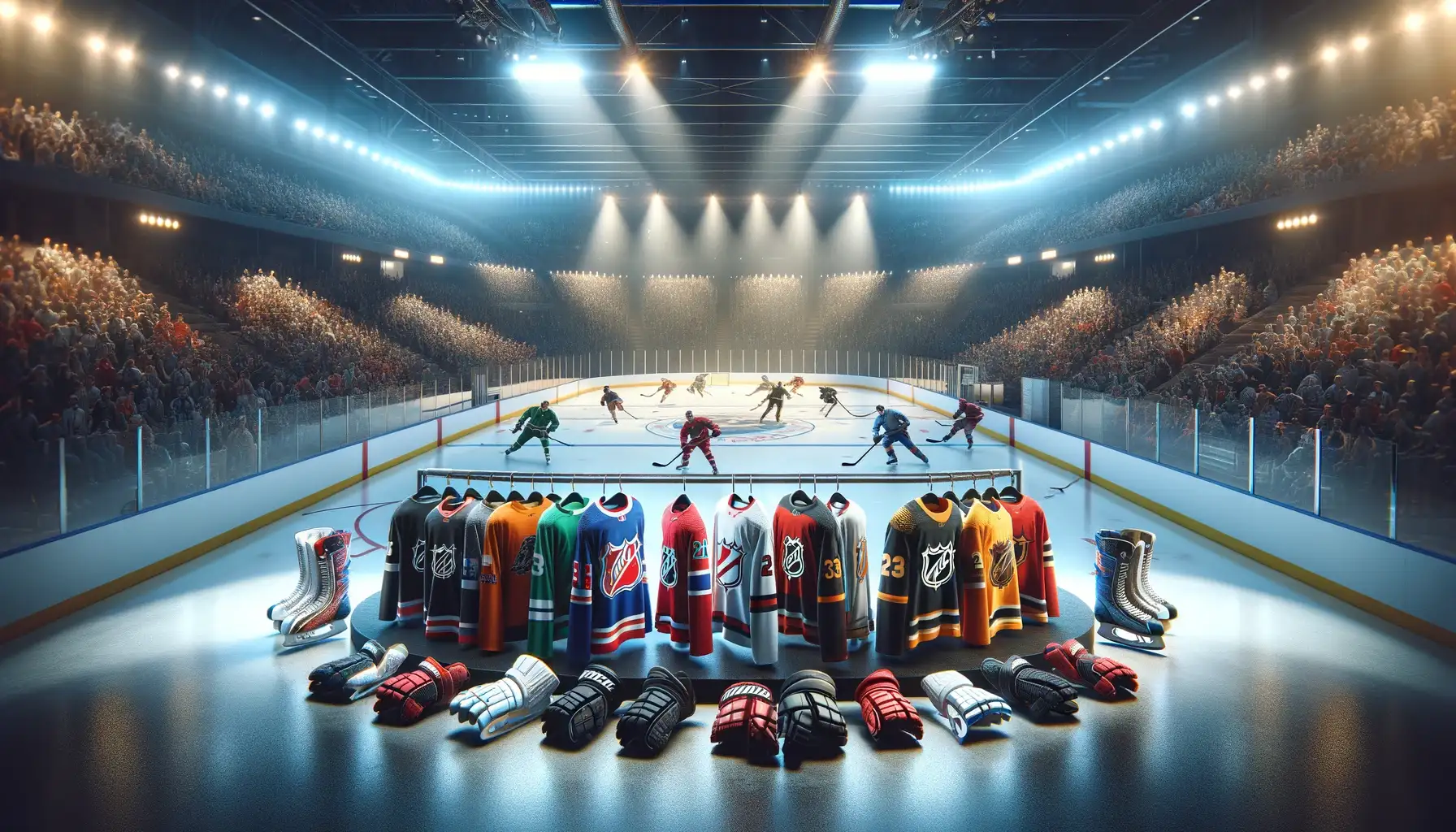Hockey helmets are the first line of defense against head injuries in a sport known for high-speed collisions, stick contact, and flying pucks. While no helmet can fully prevent concussions, a properly fitted and certified helmet can significantly reduce the risk of skull fractures and other serious trauma. With updated safety regulations and advanced technologies emerging in 2025, understanding how to choose the right helmet has never been more important.
This guide provides the latest insights, practical tips, and expert-backed recommendations to help you choose the most suitable hockey helmet—whether you’re a first-time buyer, upgrading your gear, or shopping for your child.
Key Takeaways
- Understand the safety standards and certifications.
- Always prefer to pick the appropriate type of helmet as per your position and degree of play.
- Consider key features such as fit, materials, ventilation, face protection, and chin strap.
- Keep in mind the cost of the helmet, balancing safety, quality, and budget.
- Try on multiple helmets to ensure a proper fit.
- Research the top hockey helmet brands and where to buy them.
- Take care of your helmet by inspecting, cleaning, storing, and replacing it as needed.
Understanding Hockey Helmet Safety Standards (2025 Update)
Before evaluating fit or features, it’s critical to ensure any helmet you’re considering meets current certification standards. These labels signal that the helmet has passed rigorous safety testing and is approved for use in organized hockey leagues:
A. Key Certification Bodies
-
HECC (Hockey Equipment Certification Council) – Required for players under the adult classification in North America. Certification lasts 6.5 years from the date of approval.
-
CSA (Canadian Standards Association) – Mandatory for helmets used in Canada. CSA ensures compliance with national impact safety standards.
-
CE (Conformité Européenne) – Required for helmets in European leagues. It indicates the helmet complies with EU safety directives.
Most high-quality helmets carry multiple certifications (HECC + CSA + CE) to ensure broader eligibility and peace of mind.
B. Certification Stickers and Expiration Dates
Look for certification stickers inside the helmet—usually under the padding or along the back shell. Each certified helmet includes an expiration date. Once expired, the helmet is no longer considered safe, even if it appears in good condition.
⚠️ Tip: Never remove HECC or CSA stickers. These are often required to be visible during official play.
C. Replacement Recommendations
Helmets should be replaced once they reach the expiration date or show signs of wear such as:
-
Cracks in the shell
-
Loose padding or straps
-
Deformation after a hard impact
Even high-end helmets lose protective performance over time due to material breakdown and repeated impact. Inspect your helmet regularly.
Learn the rules of ice hockey, including penalties, face-offs, offside, and icing calls, with oue guide to ice hockey rules. For a closer look at icing, check out my detailed blog post on icing in hockey.
Types of Hockey Helmets
Hockey helmets fall into several categories, each designed with specific players in mind:
| Helmet Type | Description | Ideal For |
|---|---|---|
| Traditional | Classic two-piece design with adjustable shell and foam interior | Most amateur/adult players |
| Combo | Includes an attached cage or visor for facial protection | Youth and recreational players |
| Goalie | Full-mask design with extra reinforcement for puck impact | Goaltenders at all levels |
| Youth | Sized specifically for children under 12 with additional padding | Kids and beginners |
Key Features to Consider While Buying Hockey Helmets
A. Fit and Sizing
A properly fitted helmet is crucial for both comfort and safety. Use a flexible tape to measure your head circumference about 1 inch above the eyebrows and refer to the sizing chart from your helmet’s manufacturer. Helmets should fit snugly—resting flat and level on your head without wobbling. Adjustable padding and chin straps help customize the fit.
B. Construction Materials
-
Polycarbonate shells: Found in elite helmets, known for superior impact resistance.
-
ABS plastic shells: Durable and more affordable, commonly used in beginner and mid-tier helmets.
-
Foam liners: Options include multi-density foam, EPP (expanded polypropylene), or VN (vinyl nitrile)—each with different shock absorption properties.
C. Ventilation and Comfort
Modern helmets include strategically placed ventilation zones to enhance breathability and reduce heat buildup. Moisture-wicking liners also improve comfort during longer sessions.
D. Face Protection Options
-
Full cage: Offers maximum protection and is ideal for youth and competitive play.
-
Half shield: Covers the upper face for visibility, but leaves the lower face exposed.
-
Hybrid shield: Combines a clear visor on top with a lower cage—balancing protection and visibility.

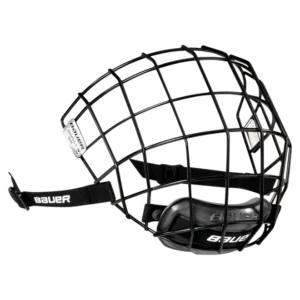
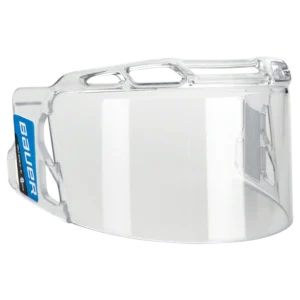

E. Chin Strap and Buckles
A secure chin strap ensures the helmet stays in place during sudden movements or collisions. Look for easy-to-adjust, padded straps that won’t irritate skin.
Check out below table, it provides a summary of key features to consider when buying hockey helmets, including their descriptions and importance.
| Key Feature | Description | Importance |
|---|---|---|
| Liner Material | Multi-density or impact-resistant foams like EPP or VN | Absorbs and disperses impact forces to protect the skull |
| Certification | Look for HECC, CSA, or CE certification | Confirms compliance with recognized safety standards |
| Fit | Helmet should sit level, not shift, and feel snug | Ensures consistent coverage and prevents injury |
| Shell Material | Polycarbonate (high-end) or ABS (mid-tier) | Impacts how well the helmet protects against collisions |
| Face Protection | Full cage, hybrid, or half shield | Balances visibility with necessary face protection |
| Ventilation | Built-in air channels and moisture-wicking liners | Improves player comfort and focus during long ice time |
The Cost of Hockey Helmets
When shopping for a hockey helmet, it’s essential to take into account its price and find a perfect blend of safety, quality, and affordability. Following are some factors that you must keep in mind:
A. Price Range by Helmet Type
| Helmet Type | Average Cost Range | Factors That Influence Cost |
|---|---|---|
| Traditional | $40 – $200 | Shell quality, brand reputation |
| Full-Face Shield | $100 – $350 | Face cage/shield material and helmet compatibility |
| Half Shield | $50 – $200 | Shield material, adjustability |
| Hybrid | $150 – $400 | Combo design, brand, added safety features |
| Goalie Mask | $200 – $1000 | Material strength, pro-level certifications |
B. Factors Affecting Cost
-
Advanced materials (like carbon fiber or 3D-printed liners)
-
Adjustability systems and tool-free custom fit
-
Integrated face protection
-
Brand heritage and league usage
C. Balancing Budget and Safety
Choose the best helmet you can afford that offers full certification, proper fit, and sufficient padding. Don’t cut corners on head protection—higher upfront investment may prevent costly injuries.
D. Tips for Finding Deals
-
Look for discounts on past-season models
-
Shop during off-season clearance events
-
Use online size filters and read return policies
-
Inspect secondhand helmets carefully (check certification expiry)
Looking to gear up for the ice? Check out our beginner’s guide to ice hockey equipment for everything you need to know, from skates and sticks to pads and helmets. Make sure you’re fully protected on the ice by exploring our guide today!
Trying On and Fitting a Hockey Helmet
A. Why Try It On First
Each brand and model has a different fit profile—oval vs. round head shapes, deeper shells, etc. Trying it on helps avoid discomfort and ensures it won’t shift during gameplay.
B. How to Fit Your Helmet
-
Position the helmet level on your head (1 inch above the eyebrows)
-
Adjust rear/side straps and internal pads for a snug fit
-
The helmet should not move when you shake your head side to side
-
Make sure the chin strap is tight enough to hold but not painful
C. Aligning Face Protection
Ensure visors or cages align with your face without pressing on your nose or jaw. Chin cups should sit firmly under your chin and fasten securely.
D. Additional Fitting Tips
-
Try the helmet with your usual game-day hair style
-
Consult a store expert for model-specific recommendations
-
Wear the helmet for a few minutes to check long-term comfort
Avoid common mistakes in helmet fitting by exploring our complete guide on hockey helmet sizing and Fit.
Top Ice Hockey Helmet Brands
If you are familiar with the top brands in the hockey industry then it will help you while selecting a hockey helmet. Each brand offers a range of helmets with varying features, materials, and price points. Here are some of the most reputable hockey helmet brands:
A. Bauer
Known for innovation and comfort, Bauer offers a wide selection from youth to pro. Popular lines include the Re-Akt series and Hyperlite helmets with lightweight shells and elite-level protection.
B. CCM
CCM blends fit, safety, and airflow with its Tacks and FitLite models. The Super Tacks X helmet stands out with a 3D-printed liner and D30 smart material for impact dispersion.
C. Warrior
The Alpha One and Covert lines are known for streamlined design, tool-free adjustments, and superior ventilation.
D. True
With a focus on fit and weight reduction, True’s Dynamic helmet series offers custom-molded liners and elite protection.
E. STX
Borrowing from its lacrosse background, STX delivers solid helmets like the Stallion and Surgeon RX3, ideal for players seeking great fit and airflow.
F. Reebok (Legacy)
Though now merged with CCM, Reebok helmets like the 11K and 7K are still available on secondary markets and offer classic fit and protection.
G. Vaughn (Goalie)
Focused exclusively on goaltenders, Vaughn’s Ventus and Velocity masks are engineered for high-impact shots with reinforced design.
Overview of Popular Hockey Helmet Brands and Helmets
| Brand | Description | Popular Models |
|---|---|---|
| Bauer | Lightweight elite protection | Re-Akt 150, Hyperlite 2 |
| CCM | 3D-printed tech and airflow-enhanced designs | Super Tacks X, FitLite 3DS |
| Warrior | Customizable fit with strong ventilation | Alpha One, Covert PX2 |
| TRUE | Ultra-light and form-fitting | Dynamic 9 Pro, TF9 |
| STX | Lacrosse-inspired comfort and durability | Surgeon RX3, Stallion HPR 1.2 |
| Reebok | Legacy helmets now sold via resale | 11K, 7K |
| Vaughn | Goalie-specific masks with reinforced protection | Ventus SLR Pro Carbon, Velocity V9 XF |
Where to Buy Hockey Helmets
Choosing the right place to purchase your helmet can impact both your confidence in the product and your wallet. Here are four common options:
A. Local Sporting Goods Stores
Great for trying on multiple helmets in-person. Staff can assist with fitting, adjustments, and face protection setup. However, selection might be limited compared to online stores.
B. Hockey Specialty Shops
These stores typically carry elite-level gear and have staff trained specifically in hockey equipment. Expect premium service, a wide variety of models, and often access to pro-level or exclusive inventory.
C. Online Retailers
Websites like Pure Hockey, HockeyMonkey, or even Amazon often offer better pricing and broader selections. Be sure to:
-
Read product reviews and sizing info carefully
-
Double-check return and exchange policies
-
Confirm certifications (HECC/CSA) are visible in the listing
D. Secondhand Options
Used gear can be found via local sports stores, Facebook Marketplace, or hockey swap events. But be cautious—check for:
-
Expired certifications
-
Cracked shells or compromised padding
-
Non-removable residue or odors
💡 Pro Tip: Never compromise on safety. If a used helmet shows signs of wear or expired certification, skip it.
As you embark on the journey of selecting the right hockey helmet, it’s important to consider the broader world of hockey gear. Explore top-quality Hockey Helmet Brands, discover the finest Hockey Skate Brands, and find the perfect Hockey Stick Brands. Additionally, if you’re interested in an in-depth comparison between CCM and Bauer, delve into our comprehensive review of CCM vs. Bauer. For a comprehensive guide to hockey clothing brands, visit Hockey Clothing Brands. Your journey to excellence on the ice begins with the right gear.
Tips for Maintaining Your Hockey Helmet
A. Regular Damage Inspections
Check weekly for:
-
Shell cracks
-
Detached foam
-
Loose screws or chin strap hardware
Replace damaged components or the entire helmet if integrity is compromised.
B. Cleaning and Hygiene
-
Remove and hand wash internal pads as per manufacturer instructions
-
Use mild soap and water to clean the shell and cage
-
Let all components air dry fully—never use a dryer
Avoid bleach or harsh solvents, which can degrade plastic and padding.
C. Proper Storage
-
Store in a cool, dry area
-
Avoid direct sunlight, heat sources, or stacking heavy gear on top
-
Use a breathable helmet bag to prevent bacteria build-up
D. When to Replace
-
Follow HECC expiration (typically 6.5 years from manufacture)
-
Replace after major impacts or if foam becomes compressed
-
Upgrade if fit or comfort changes over time
Looking to learn more about ice hockey? Read my ultimate guide to ice hockey for everything you need to know to get started and become a pro.
Common Questions on Buying Hockey Helmets
What makes a good hockey helmet?
A snug fit, multi-density foam liner, ventilation, and valid HECC/CSA certifications.
Where is helmet size information located?
Usually inside the helmet on a sticker near the rear padding or chin strap.
How do I know what size to wear?
Measure your head about 1 inch above your eyebrows and compare with the brand’s size chart.
Should a hockey helmet feel tight or loose?
It should feel snug but comfortable. It must not wobble or create pressure points.
How often should I replace a helmet?
Every 5–7 years, or sooner if it’s damaged or has expired certification.
Can I buy a used helmet safely?
Only if it’s undamaged and still within certification. Be extra cautious—head protection isn’t worth the risk.
Is a more expensive helmet better?
Premium helmets usually offer more comfort and advanced materials, but fit and certification matter most.
Which brand is best: Bauer or CCM?
Both are excellent—try both and choose what fits your head shape and preferences best.
Selecting the right hockey helmet is more than just a gear decision—it’s about protecting your long-term health and confidence on the ice. Whether you’re an NHL hopeful or a weekend rec-leaguer, the right helmet makes a difference.
✅ Focus on fit, certification, comfort, and updated features
✅ Replace helmets when expired or damaged
✅ Shop smart, but don’t compromise safety for price
Your helmet is your most important line of defense—invest wisely, protect your brain, and enjoy the game.
Are you ready to step up your ice hockey game?
Boost your ice hockey performance with our in-depth guides covering nutrition, player positions, skills, shooting, bodychecking, tips, skating drills, and off-ice training. Elevate your game to the next level by understanding the essentials and advanced techniques.
- Ice Hockey Nutrition: Fuel Your Performance on the Ice
- Ice Hockey Skills: Master the Techniques to Excel in the Game
- Ice Hockey Tips: Strategies and Advice for a Winning Edge
- Body Checking in Hockey
- Ice Hockey Skating Drills
- Off-Ice Training: Enhance Your Skills and Conditioning Away from the Rink
- Ice Hockey Positions: Understanding the Different Roles on the Ice
- Ice Hockey Skating Drills
Prepare to skate confidently and command the rink! We are constantly working on new articles to help you improve your ice hockey game. Stay tuned for more!
